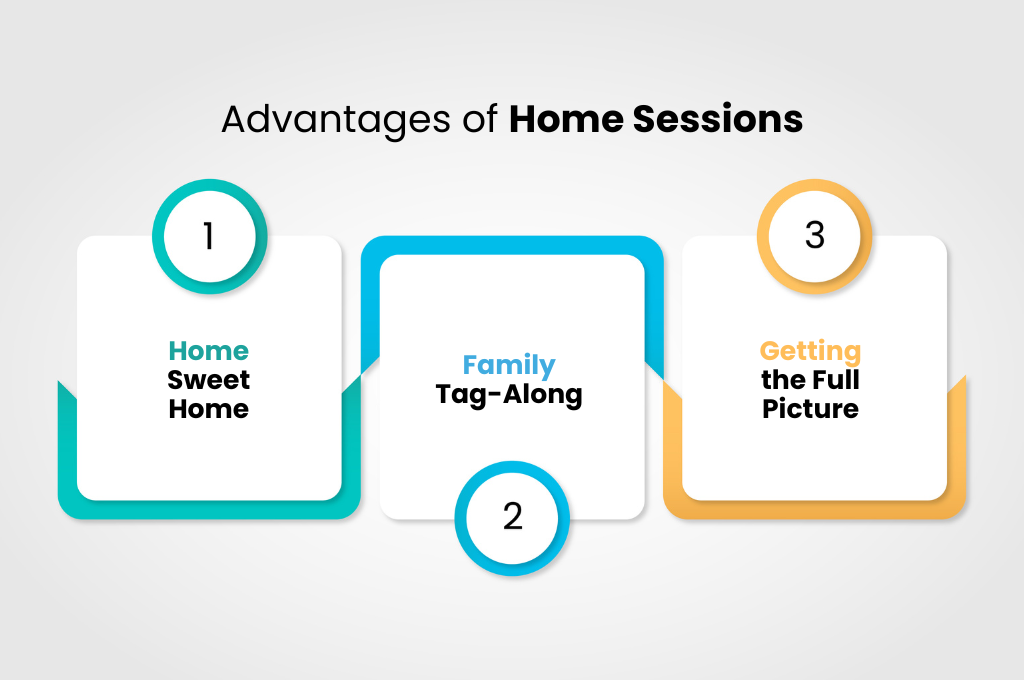Thriving with Telehealth: Advancing ABA Therapy Techniques
ABA TherapyJuly 17, 2025

Understanding ABA Therapy
When it comes to Applied Behavior Analysis (ABA) therapy for autism, wrapping your head around the ins and outs—what it is and how it works—can make a world of difference in tackling intervention strategies.
Basics of ABA Therapy
ABA therapy dishes out techniques to check behavior, point out areas to work on, and put into action steps to teach and build up the good stuff while easing the rough patches with individuals who have autism (Level Ahead ABA). This whole shebang is whipped up to fit the one-of-a-kind needs of each person, zeroing in on boosting social abilities, how they chat, take care of themselves, hit the books, and get by on their own.
The backbone of ABA therapy is positive reinforcement. What does that mean? Well, every time a person shows the right behavior or skill, they get a reward they really like. It's all about nudging those good behaviors to stick around, helping new skills grow, and setting the stage for behaviors that help with everyday life (Autism Speaks).
Data-Driven Approach
What really stands out about ABA therapy is its love affair with data. It's all about collecting numbers and facts to track progress and figure out the best next steps for interventions. By keeping a close eye on things with methodical data collection, therapists can see how things are going, spot where they can get better, and tweak their game plan to keep things moving in the right direction.
In this mix, you’ll find behavior analysts, the folks with the know-how, often carrying the Board Certified Behavior Analysts (BCBAs) badge. They're the ones masterminding the custom ABA programs for kids or adults with autism. These pros craft goals that are perfectly lined up with each person’s skills, needs, and their whole family setup, making sure that what they do hits the mark (Autism Speaks).
Once you’ve got a setup, therapists, often Registered Behavior Technicians (RBTs), step in under the BCBA’s wing. They're the hands-on crew, supporting individuals directly, helping them practice skills, and chasing after those personal milestones. It’s kind of like a team sport where analysts, therapists, and families join forces to make ABA therapy work its magic (Autism Speaks).
Grasping the ropes of ABA therapy—including its data-love and personalized touch—is hugely beneficial for parents, caregivers, educators, and pros. It's all about stepping up to support individuals with autism to grow, learn, and flourish.
Benefits of Home-Based ABA Therapy
Digging into the perks of home-based ABA therapy shows just how nifty it is to have sessions at home, where comfort leads the way and you can save a few bucks too.
Advantages of Home Sessions

When it comes to receiving ABA therapy at home, there are some pretty neat bonuses. According to Level Ahead ABA, here are some of the top perks of doing therapy in your own space:
- Home Sweet Home: Having therapy right where you live makes it cozy and secure. This snug setting helps make the therapy more effective because folks feel at home—literally.
- Family Tag-Along: Home sessions get everyone involved. Families can jump into the session, pick up on helpful tips, and help out around the clock, not just during therapy.
- Getting the Full Picture: Therapists see what’s up with the individual in their natural setting, getting real-deal insights. This way, they can tweak plans to fit like a glove and evaluate more accurately.
Cost-Effectiveness
Home-based therapy ain’t just comfy; it can also be easier on the wallet than those therapy centers. Here's why it's easier financially, as noted by Level Ahead ABA:
- Forget the Fancy Builidngs: Skipping the whole renting or maintaining a facility thing means there's less overhead. So those costs aren't passed down to you.
- Bye-Bye to Driving Hassles: You can wave goodbye to the gas bills and the hustle of driving to therapy sessions when the therapist comes to you.
Getting ABA therapy at home offers a smart way to get effective help, keeping things convenient and family-focused. It’s all about tailoring the experience to fit the person's needs and family quirks while keeping everything pleasant on the budget front.
Transitioning to Telehealth ABA Therapy
ABA therapy is switching gears into a new era, bringing telehealth services to the forefront. Especially handy for social skills training, telehealth is shaking things up, offering an alternative way for delivering intervention strategies. Let's take a look at how effective these virtual sessions are and what bumps in the road they're hitting along the way. Plus, we’ll dig into how to make remote sessions even better.
Effectiveness of Telehealth
Hold on to your hats! Telehealth therapy has shown it can teach kids with autism a few new tricks, even during a global pandemic. Video calls have gone from blurry to brilliant, helping people learn language, adaptive behaviors, and social skills. Yep, recent studies have proven that telehealth gets the job done, letting kids maintain and master new skills (NCBI).
Telehealth ABA services have become a powerhouse for putting treatment plans into motion and keeping track of progress, thanks to real-time video sessions. They've opened doors for families, making behavior therapy as easy as clicking "Join Meeting" from home.
Challenges and Solutions
Jumping on the telehealth train comes with its own set of hurdles, like figuring out how to adjust those in-person skills for a digital screen. One way to handle this is by diving into the nitty-gritty stuff and offering useful tips for sprucing up telehealth methods (NCBI).
Then there’s the big role caregivers play in making telehealth work. For sessions to hit the mark, caregivers need to be in the loop and on the ball. ABA pros should chat with them regularly, setting the stage and keeping the lines open. This team effort helps make sure everything runs smoothly (NCBI).
Picking the right rewards, or "reinforcers," can also be a tricky part of telehealth ABA. But don't sweat it. Professionals just need to do frequent check-ins to figure out what keeps clients motivated online and find ways to deliver those reinforcers to keep things lively during sessions (NCBI).
With some smart solutions and good ol' cooperation, practitioners can slide into telehealth ABA therapy like it's second nature. It’s all about giving folks with autism the support they need to boost their social chops and keep growing strong.
Engaging in Telehealth ABA Sessions
As therapy keeps changing, so too do the methods for Applied Behavior Analysis (ABA). With the rise of telehealth, we need to understand how crucial caregivers are and find ways to keep clients engaged to ensure ABA sessions get the job done right, even if everyone's miles apart.
Role of Caregivers
In the world of telehealth direct ABA services, caregivers aren't just waiting in the wings; they're co-stars in the show. It’s essential for ABA specialists to pull caregivers in, setting clear expectations and building a solid partnership through these virtual sessions. Getting caregivers onboard means that the magic of therapy continues long after the screens go dark.
Parents and caregivers bring a treasure trove of insights about a kiddo’s behavior and reactions in different situations. This teamwork between therapists and caregivers creates a nurturing space where real growth and learning can happen.
Enhancing Client Engagement
The trick to making telehealth ABA sessions really pop is by keeping things engaging. One biggie is doing regular preference assessments to figure out what makes the client tick and keeps them coming back for more. Knowing what gets individual clients excited helps keep them involved and learning during sessions.
Using lively activities, visual tools, and customized learning materials, therapists can make sessions more appealing and interactive. Crafting content that speaks to each person’s interests transforms sessions from a chore into something they truly want to be a part of.
Switching up communication tools, like video chats or virtual games, can keep clients engaged and interested. These platforms help create sessions that are lively and interactive which aids in learning new skills and applying them in real-world scenarios.
Involving caregivers and spicing up client engagement are keys for ABA practitioners making the most out of telehealth sessions. Such adaptations ensure meaningful progress for those on the autism spectrum. Plus, keeping things private and nurturing strong relationships with clients and their families are important ingredients in cooking up success in telehealth ABA therapy sessions.
Learn About: Expert Tips for Smooth Transitions for Kids with Autism
